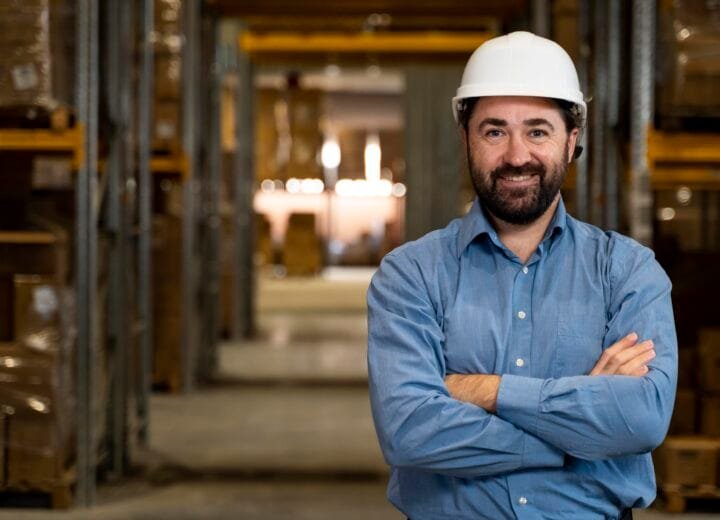Line balancing is one of the most commonly attempted productivity improvements in manufacturing. It’s also one of the most frequently failed initiatives.
The pattern is predictable. A factory conducts time studies, calculates takt times, redistributes work elements across stations, and creates a balanced line layout on paper. Initial implementation shows promise. Within three to four months, the old bottlenecks reappear. Stations that were supposed to run at uniform cycle times start showing variation again. The documented balance exists in files, but the actual line operates nothing like the plan.
The problem isn’t lack of effort or poor methodology. The problem is a fundamental misunderstanding of what line balancing actually requires to succeed.
Why Traditional Line Balancing Breaks Down
Most line balancing exercises start with measuring average cycle times at each workstation. These averages get used to calculate task distribution, redistribute work elements, and create a theoretical balance matched to takt time.
This approach has a critical flaw: it balances an average that doesn’t exist in reality.
Station 4 doesn’t operate at its average cycle time of 58 seconds. It swings between 46 seconds and 72 seconds depending on which operator is running it, what component batch is being processed, and whether the previous station passed any quality issues downstream. Station 7 might show 52 seconds average during the study period, but that’s because measurements happened during a week when material flow was smooth. When material staging reverts to normal chaos, Station 7’s cycle time jumps to 68 seconds.
The line being balanced is a statistical fiction. Real operations never stabilize at those averages because the underlying variation sources remain unaddressed.
The second failure point is that traditional balancing redistributes time without questioning why that time is required. Station 4 takes 58 seconds on average, so that’s the number used for balancing calculations. What doesn’t get examined is that 16 of those 58 seconds are non-value-adding activities—walking to fetch components, waiting for the previous station’s signoff, or reworking defects that shouldn’t have reached that station.
Balancing simply moves the waste around. The inefficiency gets redistributed across stations instead of eliminated.
What Actually Needs to Happen First
Line balancing cannot succeed on an unstable foundation. Before attempting to balance task distribution, three foundational issues must be resolved.
First, variation sources must be identified and eliminated. When Station 4 shows cycle times ranging from 46 to 72 seconds, that 26-second spread isn’t random. It’s caused by specific, identifiable factors—different operators using different methods, inconsistent component quality from suppliers, material not staged at point of use, tools requiring adjustment between cycles.
Each variation source needs to be documented, root-caused, and addressed. Only after variation is reduced to acceptable levels—typically under 10% of average cycle time—does balancing make sense.
Second, waste within each cycle must be eliminated. If a workstation’s cycle time is 58 seconds, how much of that is value-adding work and how much is non-value-adding activity? Traditional balancing doesn’t ask this question. It treats the entire 58 seconds as necessary work and balances accordingly.
A proper approach breaks down every cycle into elements, categorizes each element as value-adding or non-value-adding, and systematically eliminates the waste before any rebalancing attempt.
Third, work methods must be standardized. When three operators do the same job in three different ways with three different cycle times, using the average of those three for balancing purposes guarantees failure. The most efficient method needs to be identified, documented as standard work, and trained to all operators across all shifts.
Only after methods are standardized does a meaningful baseline exist for balancing decisions.
The ProductivEdge Approach to Sustainable Line Balancing
The ProductivEdge framework addresses line balancing as the final step in a sequence, not as a standalone exercise.
Stage 1: Detailed elemental analysis. Conduct time studies that capture not just average cycle times but every element within each cycle. Categorize elements as value-adding, necessary non-value-adding, or pure waste. Identify variation sources across shifts, operators, and batches.
Stage 2: Systematic waste elimination. Run each waste source through a structured prioritization matrix evaluating ten parameters—cost to eliminate, savings potential, implementation complexity, technical feasibility, ROI timeline, scalability, risk, and integration requirements. Each opportunity gets scored. Only those exceeding 60% on the matrix are prioritized for immediate action.
This ensures resources get deployed on high-impact improvements rather than scattered across dozens of minor issues.
Stage 3: Standardization. Document the most efficient method for each operation. Train all operators to that standard. Implement visual work instructions and mistake-proofing where needed. Verify that cycle time variation has been reduced to acceptable levels.
Stage 4: Line balancing. Only after variation is controlled and waste is eliminated does the actual balancing exercise begin. At this point, cycle times are stable and predictable. Takt time calculations reflect reality. Task redistribution is based on capable cycle times, not historical averages inflated by waste.
The balance holds because the foundation is stable.
What This Achieves
Factories that implement line balancing through this sequence see fundamentally different results than those attempting traditional approaches.
Cycle time variation at individual stations drops from 25-40% to under 8%. Throughput improvements range from 18-25%, not through adding capacity but through eliminating waste and variation. Operator idle time decreases significantly. More critically, the improvements sustain—lines remain balanced 12-18 months post-implementation without constant rebalancing efforts.
The investment required is modest. Typical implementations involve staging redesign (₹2-4 lakhs per line), standardized work documentation and training (₹1-2 lakhs), mistake-proofing fixtures (₹3-5 lakhs), and minor automation of repetitive non-value tasks (₹4-8 lakhs). Total investment per line usually ranges from ₹12-18 lakhs with payback periods under 8 months.
The Core Insight
Line balancing isn’t a calculation exercise. It’s a process stability requirement.
Attempting to balance a line that operates with high variation, embedded waste, and non-standardized methods produces temporary results at best. The balance exists only in documentation while the actual line continues operating in its inefficient patterns.
Sustainable line balancing requires fixing the system first—eliminating variation sources, removing waste from individual cycles, and standardizing methods across operators and shifts. Only then does redistributing tasks create lasting improvement.
Most factories skip the foundation work and jump straight to task redistribution. That’s why 8 out of 10 line balancing efforts fail to sustain beyond a few months.
If your line balancing initiatives haven’t delivered lasting results, the issue likely isn’t your calculations—it’s the sequence. ProductivEdge provides the structured approach to build the stability first, then balance effectively. Contact us to explore how this framework can work in your operations.
Contact us




